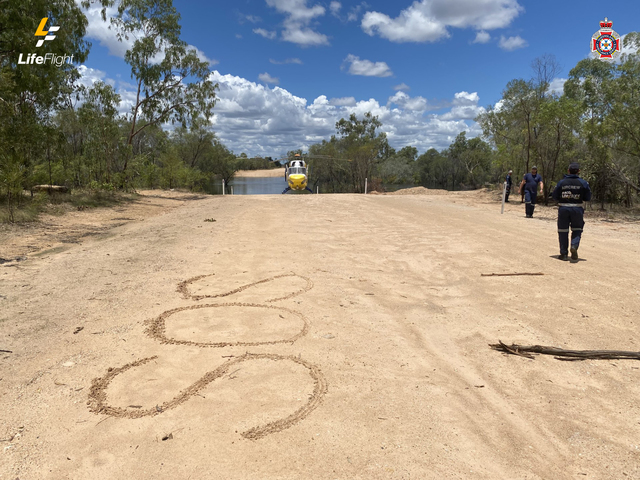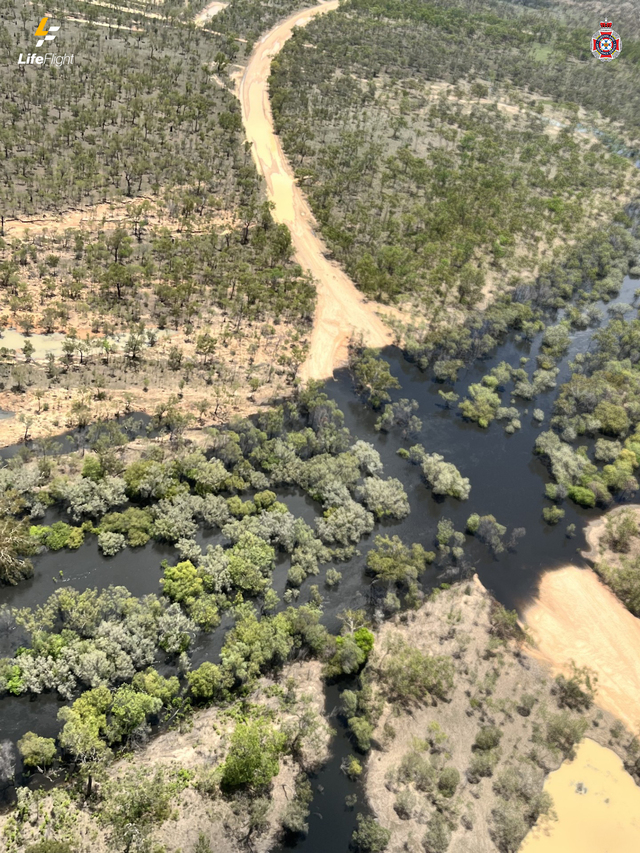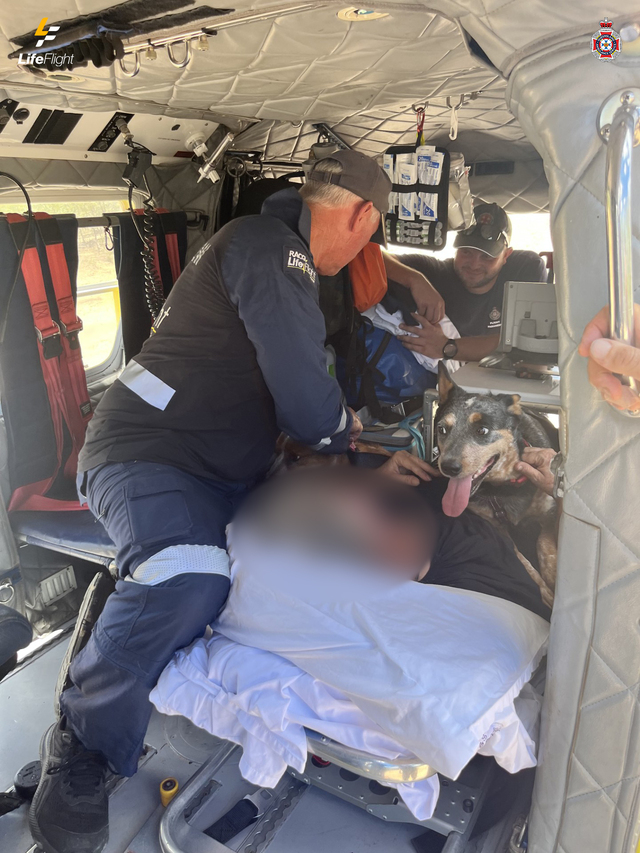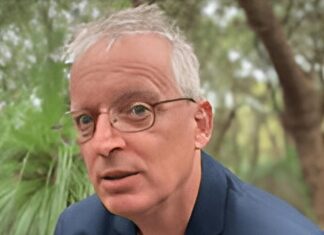An experienced Kiwi helicopter pilot in his first week at LifeFlight has flown to rescue a Queensland couple who were stranded in croc country for three days and two nights.
Mount Isa-based LifeFlight pilot Michael Adair is used to flying over snow and mountains and on Saturday 7 December flew for six hours and 300 nautical miles, over the Australian desert.
The LifeFlight chopper landed near Clark Creek near Dorunda Station, 120 km south of Kowanyama.
The couple were driving on the Burke Developmental Road crossing the Clark Creek when a wave of water washed their 4WD off the road.
Michael said the couple couldn’t believe they were being rescued – “They said: ‘thank God you’re here, we didn’t think anyone was coming’.
“The wife told us she had been hearing voices in the bush from exposure and had convinced herself that nobody was coming to help them, so she was very emotional when we hugged her,” he said.
“The couple had written two big SOS signs in the dirt and were frantically waving up at the helicopter as we flew over them.
“These people had resigned themselves to dying and seeing the look on their faces when they saw us and realised they weren’t going to die – that’s the reason we do this.”
Emergency services were notified that the pair hadn’t arrived at Kowanyama when they were expected to, but flooded roads meant the Queensland Police Service (QPS) were unable to reach them.
“They were in really good spirits and when we arrived, they were very happy and jovial to see us and then the reality of the fact that, hey there is a helicopter there, and they’re about to be rescued and that’s when the emotion welled up,” Michael said.
“She’s sort of resigned herself to the fact that this might be it, so hearing the helicopter come over the top and once we were actually out – it sounds silly, but you touch her and give her a hug and she knows that she’s not imagining it and she’s actually going to be saved – yeah it was pretty intense.”
Brisbane-based LifeFlight flight examiner Mark Overton was in Mount Isa taking Michael through his final assessments and was in the co-pilot seat for Saturday’s search and rescue.
“Mike is used to flying in a completely different environment and we’ve thrown him into the middle of the outback and on his first job he’s been sent to the middle of nowhere,” he said.
“The distance we had to travel to get from Mt Isa to north of Nomanton up near Kowanyama was very, very fast and just the difference between New Zealand and Australia was huge.
“He was a bit taken aback by just how big Australia can be.”
Mark said the rescued couple told the LifeFlight rescue crew they were moving from Normanton to Kowanyama and everything they owned was in the 4WD that was washed away in crocodile-infested flood water as they attempted to cross Clarke Creek.
“The car flooded quickly, the electric windows locked, and the pair managed to get out the passenger window,” he said.
“The man had to dive down to retrieve their two dogs who were limp by the time he got to them, but they were okay.
“They had a cattle dog and a rusty red mix red dog we called Bluey and Bingo.
“It was a bit of a clown car trying to get six people and two dogs into a three and a half tonne helicopter, but we did it and they were pretty relieved.”
The couple told the crew they were terrified about a large crocodile that stalked the pair and their dogs during both nights. They made a makeshift shelter out of branches and leaves to keep the crocodile away.
The pair had been in 40-degree heat had been badly attacked by bugs, had no food to eat and were forced to drink muddy river water which made them sick.
Michael said it was an exhilarating first rescue experience in Australia, where he was overwhelmed by the vast expanse.
“I was saying ‘choice’ a lot,” he said.
“I was looking down and seeing all sorts of Australian animals – kangaroos, and cattle and crocs.
“I have been in the rescue industry for five years back home in New Zealand but it was just wonderful to have that as my first experience of rescue helicopter operations in Australia.
“Not only a really technically challenging mission, but one with a perfect outcome. It was an amazing start to my Australian rescue career.”









